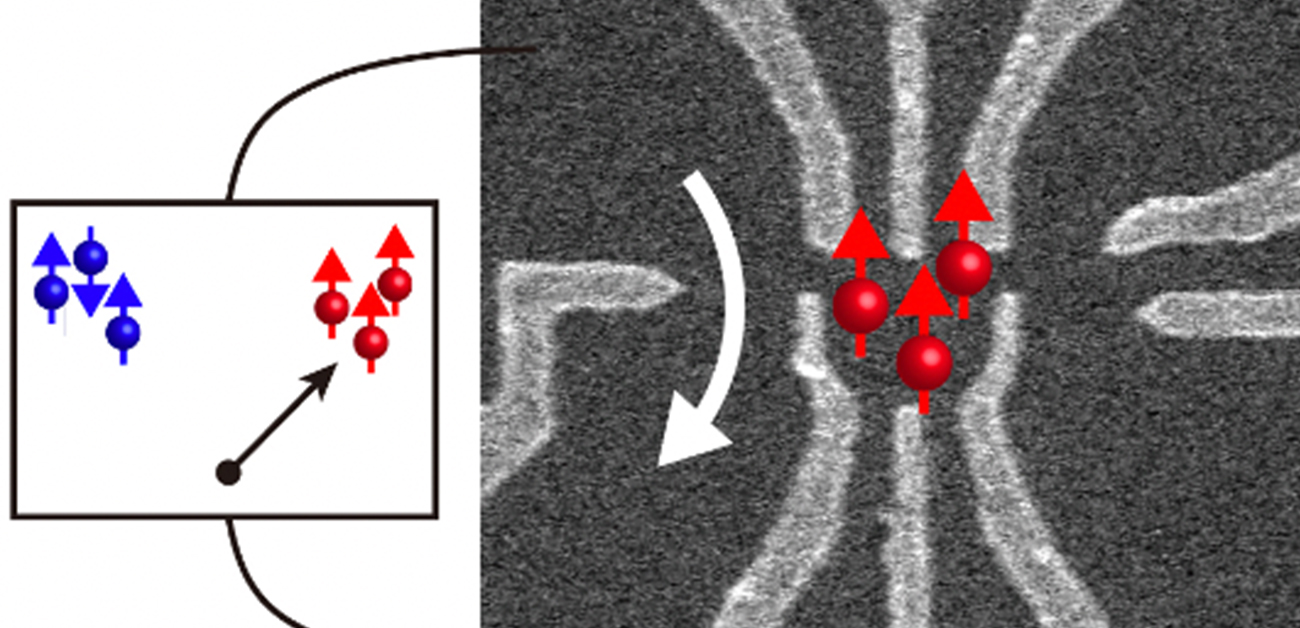
Accessing high-spins in an artificial atom
Researchers at Osaka University measure the high-spin state of up to four electrons confined on a quantum dot using the quantum Hall effect, which may help enable a new resource for spin-based quantum computation
Scientists from SANKEN at Osaka University demonstrated the readout of spin-polarized multielectron states composed of three or four electrons on a semiconductor quantum dot. By making use of the spin filtering caused by the quantum Hall effect, the researchers were able to improve upon previous methods that could only easily resolve two electrons. This work may lead to quantum computers based on the multielectron high-spin states.
Despite the almost unimaginable increase in the power of computers over the last 75 years, even the fastest machines available today run on the same basic principle as the original room-sized collection of vacuum tubes: information is still processed by herding electrons through circuits based on their electric charge. However, computer manufacturers are rapidly reaching the limit of how much they can readily achieve with charge alone, and new methods, such as quantum computing, are not ready yet to take their place. One promising approach is to utilize the intrinsic magnetic moment of electrons, called “spin,” but controlling and measuring these values has proven to be very challenging.
Now, a team of researchers led by Osaka University showed how to read out the spin state of multiple electrons confined to a tiny quantum dot fabricated from gallium and arsenic. Quantum dots act like artificial atoms with properties that can be tuned by scientists by changing their size or composition. However, the gaps in energy levels generally becomes smaller and harder to resolve as the number of trapped electrons increases.
To overcome this, the team took advantage of a phenomenon called the quantum Hall effect. When electrons are confined to two dimensions and subjected to a strong magnetic field, their states become quantized, so their energy levels can only take on certain specific values. “Previous spin readout methods could only handle one or two electrons, but using the quantum Hall effect, we were able to resolve up to four spin-polarized electrons,” first author Haruki Kiyama says. To prevent disturbances from thermal fluctuations, the experiments were performed at extremely low temperatures, around 80 millikelvin. “This readout technique may pave the way toward faster and higher-capacity spin-based quantum information processing devices with multielectron spin states,” senior author Akira Oiwa says.

Fig.1 Three-electron high-spin state in a semiconductor quantum dot and its readout.

Fig.2 Scanning electron micrograph of the quantum dot device used in this work.

Fig.3 Concept of the high-spin readout.
The article, “Preparation and readout of multielectron high-spin states in a gate-defined GaAs/AlGaAs quantum dot,” was published in Physical Review Letters at DOI: https://doi.org/10.1103/PhysRevLett.127.086802
